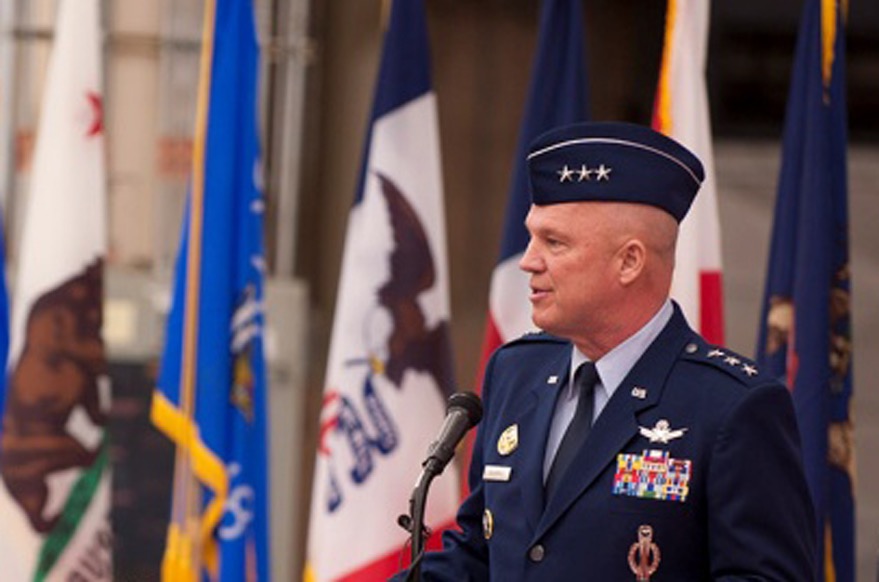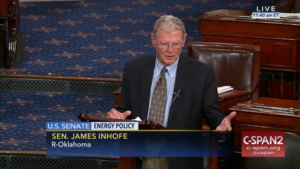SASC OKs Space Force, But Imposes Tight Oversight
Posted on

Gen. John Raymond, nominee to lead US Space Command
CORRECTED: AUTHORIZED FUNDING LEVEL
CAPITOL HILL: The Senate Armed Services Committee (SASC) has approved the White House proposal for a new Space Force, but the authorizes remain deeply skeptical about the potential for cost and bureaucratic bloat.
“They are to come back to the oversight committee every single month and tell us where they are, how they’re standing it up,” a senior committee staff member told reporters today. While saying that committee members are largely supportive, he explained that they do “not want a lot of bureaucracy.”
The 2020 National Defense Authorization Act (NDAA) and its decision on a Space Force — a summary of which was made available, but not the actual legislative text — had strong bipartisan support, SASC Democratic minority leader Sen. Jack Reed told reporters in a press conference. (Committee Chairman Sen. Jim Inhofe couldn’t be at the press briefing because his wife broke her leg.)
CORRECTED: The SASC bill authorizes the $72.4 million requested by the White House for the Space Force but only as a starting figure. “That’s why we are meeting every 30 days,” one staffer explained, “to see if they need additional help as time goes on.”

Sen. James Inhofe speaks on the Senate floor
The SASC funding parameters contrast with the HAC decision earlier this week to provide $15 million, but only for DoD to further study the Space Force concept, rather than as funding for actually launching it.
The SASC NDAA also restricts the Air Force’s ability to attempt any shenanigans with personnel and funding levels by mandating that “no additional military or civilian personnel” be assigned to the Space Force. Only existing Air Force personnel are to be designated as Space Force members.
The bill would “redesignate” the commander of Air Force Space Command as the Space Force commander. The Space Force commander, in turn, would be dual-hatted as the commander of US Space Command for the first year of the Space Force’s life. President Donald Trump nominated the head of Air Force Space Command, Gen. John Raymond, as the head of the newly established US Space Command — and committee staff say they have no desire to derail that nomination process; rather they hope to speed it. Only after a year would the positions be separated, with the Space Force commander then becoming a separate four-star on the Joint Chiefs of Staff, reporting directly to the Air Force Secretary. During the first year, the Space Force commander would report to the Air Force Chief of Staff.
“I think it’s responsible to take this thing at a pace that makes sense. So we give them a year to get this all together and stood up, and figure it out. They may want to tweak something within that year,” a senior committee staffer told reporters. “If you look at their original proposal, they themselves asked for a lot of authority to take a lot of time to figure it all out.”
Todd Harrison, director of the Aerospace Security Project at the Center for Strategic and International Studies (CSIS), told me the move to transfer Air Force Space Command into the Space Force is “going to make it much more difficult for the Air Force to withhold personnel.” That, he said, “will ultimately help keep the cost of the Space Force down, because it will not need to hire new personnel to replace the ones being held back by the Air Force.”
The SASC also keyed in on space acquisition as a key concern. The legislation would “redesignate the current Principal Assistant to the Secretary of the Air Force for Space to the Principal Assistant to the Secretary of the Air Force for Space Acquisition and Integration, who would oversee all space acquisition activities.” This would include heading up a “to-be-established Space Acquisition Council.”
While staff would not go into details about who would sit on the new council, one staff member said: “The biggest issue is integration and synchronization of how space acquisition will work with the US Space Force stand up.” Another senior staffer told me that the SASC had studied the way the National Reconnaissance Office (NRO) has handled acquisition largely with success, and tried to figure out how DoD could emulate that model. “We did the best we could to figure out how to duplicate the magic sauce of NRO,” he said, noting that the Space Acquisition Council — which would at the moment be an Air Force body — would work with the NRO. (NRO will not be integrated into the new Space Force under the committee’s bill.)
The SASC version of the NDAA differs from the White House plan for a Space Force in that it currently restricts membership of the new force to the Air Force, and does not address the eventual integration of Army and Navy space personnel and programs. Further, it does not approve the Trump Administration’s plan to create a new undersecretary of space; instead calling for an assistant secretary of Defense for space policy.
Committee staff, however, were insistent that the 2020 NDAA language does not veer too far from President Donald Trump’s proposed legislation. This is contrast to the approach being taken by the House Armed Services Committee (HASC), with Democratic Chairman Adam Smith warning the administration back in March that he would not support the proposal as it was drafted. Smith called the White House proposal “highly problematic” and expressed serious concerns about the “top heavy” bureaucratic structure and the high costs. Smith, who previously supported the effort by his colleagues Democrat Jim Cooper and Republican Mike Rogers, said the HASC instead will write its own version. The HASC mark-up of the 2020 NDAA is slated for June 12.
Nonetheless, Harrison said the SASC decision now ups the odds of the Space Force actually being approved by Congress this year, in some form. “One of the big unknown factors was how the Senate Armed Services Committee would view the Space Force proposal, so now that this has come out of committee I think it raises the odds significantly that a Space Force is ultimately enacted into law.”
Subscribe to our newsletter
Promotions, new products and sales. Directly to your inbox.
